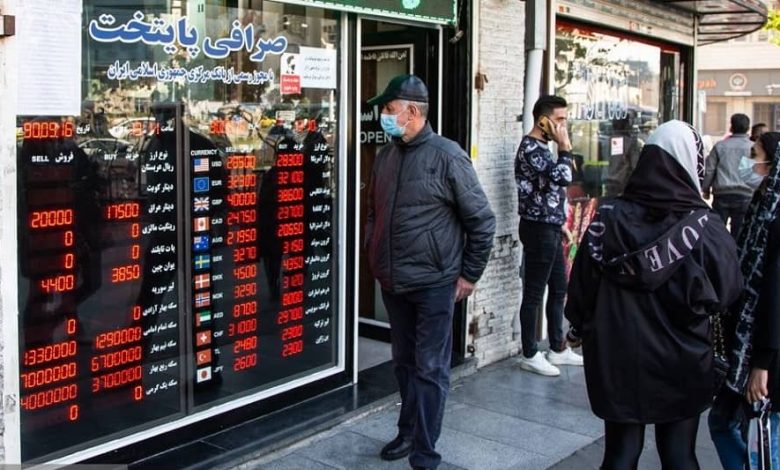Raisi Blames Iran’s Economic Turmoil on the Dollar, Orders New Institution

Iran-Dollar-Exchange-
Written by
Mansoureh Galestan
During his visit to the southwestern province of Khuzestan last week, the regime’s president, Ebrahim Raisi, made yet another bogus claim about Iran’s economic crisis.
Blaming the country’s financial calamity of people using the dollar, he claimed the system “should cut all ties with this wretched currency” and ordered the creation of an imaginary “institution to implement this issue.”
His claims and order caused much stir in Iran’s already worn-out economy.
“Raisi’s remarks alone, due to his government’s economic surgery last year, sent a wave of economic insecurity to the society,” wrote the state-run Tejarat News on April 30.
In other words, Raisi tacitly revealed the regime’s scheme to further play with the currency rate, inflicting more pain and misery on people. In a matter of days, Iran’s volatile currency market experienced yet another round of fluctuations.
“The value of coin and gold shockingly skyrocketed. A coin is now worth 340 million rials. This is a bubble growth,” the state-run Farda website wrote on April 30.
Iran’s economic crisis worsens every day, despite its rich resources. Authorities’ self-boasting rhetoric prevents them from admitting that they are overwhelmed by economic pressures and face an explosive society.#IranRevoIution https://t.co/hvqGmZ1RNY
— NCRI-FAC (@iran_policy) April 10, 2023
Raisi’s government has a huge budget deficit. To compensate for its budget deficit, his government has ramped up banknote printing, creating tons of fiat money and unnecessary liquidity. The huge amount of liquidity coupled with Iran’s low production rate further increases inflation. Besides, the Raisi government plays with the currency rate by using multiple dollar exchange rates.
“The real exchange rate of the dollar is below 200,000 rials,” said MP Ruhollah Izadkhah on February 22. The regime has enough commodity money but most of the budget is squandered on terrorism and oppression, devaluating the country’s national currency.
When a country’s national currency undergoes devaluation, it unleashes a domino effect of economic downturn, exacerbating unemployment and skyrocketing living expenses. The resulting jacked-up costs of living and income redistribution place the burden of financial collapse squarely on the shoulders of low-income groups, who make up the majority of Iran’s 87-million populace.
With the economy in turmoil, Iran’s Central Bank chief Mohammad Reza Farzin announced the establishment of the “Center of Gold and Currency Exchange” on February 21. The aim of this center is to identify and reveal the true value of currencies amidst the country’s economic crisis. However, this initiative will not have a positive impact on the country’s dire economic situation.
Furthermore, Farzin emphasized that the government would continue to allocate the “Nimaee” currency or distribute dollars to select importers at an unfairly low rate of 280,000 rials. This preferential treatment only benefits a small group of individuals, while the majority of the 87 million population suffers from the consequences of the country’s financial instability.
Iran’s Currency Crisis: A Recipe for Revolution?https://t.co/ru7MsxL6EX
— NCRI-FAC (@iran_policy) March 5, 2023
“These days everyone speaks of high inflation caused by the government’s budget deficit,” wrote the state-run Eskenas newspaper on May 1. As a result of Raisi’s devastating economic policies, housing prices are also soaring.
“Rents has increased by 150%, and renters must go through many difficulties to obtain a loan to pay their rent,” the state-run ILNA News Agency wrote on May 1.
According to the state-run Sharq Daily on April 17, the poverty line is nearly 300 million rials, while Iranian workers and employees earn less than 100 million rials. In other words, Iranians pay the price of Raisi’s disastrous economic policies.
Raisi’s scandalous monetary juggling lays bare the economic collapse, incurable currency crisis, and political failure of Supreme Leader Ali Khamenei’s consolidation project to preserve the regime against the uprising. Iran’s economy under the regime has degenerated beyond redemption. Any investment in it or hopes to revive it by pouring money down the drain is a pipe dream, as every penny ends up in the ayatollahs’ coffers.

